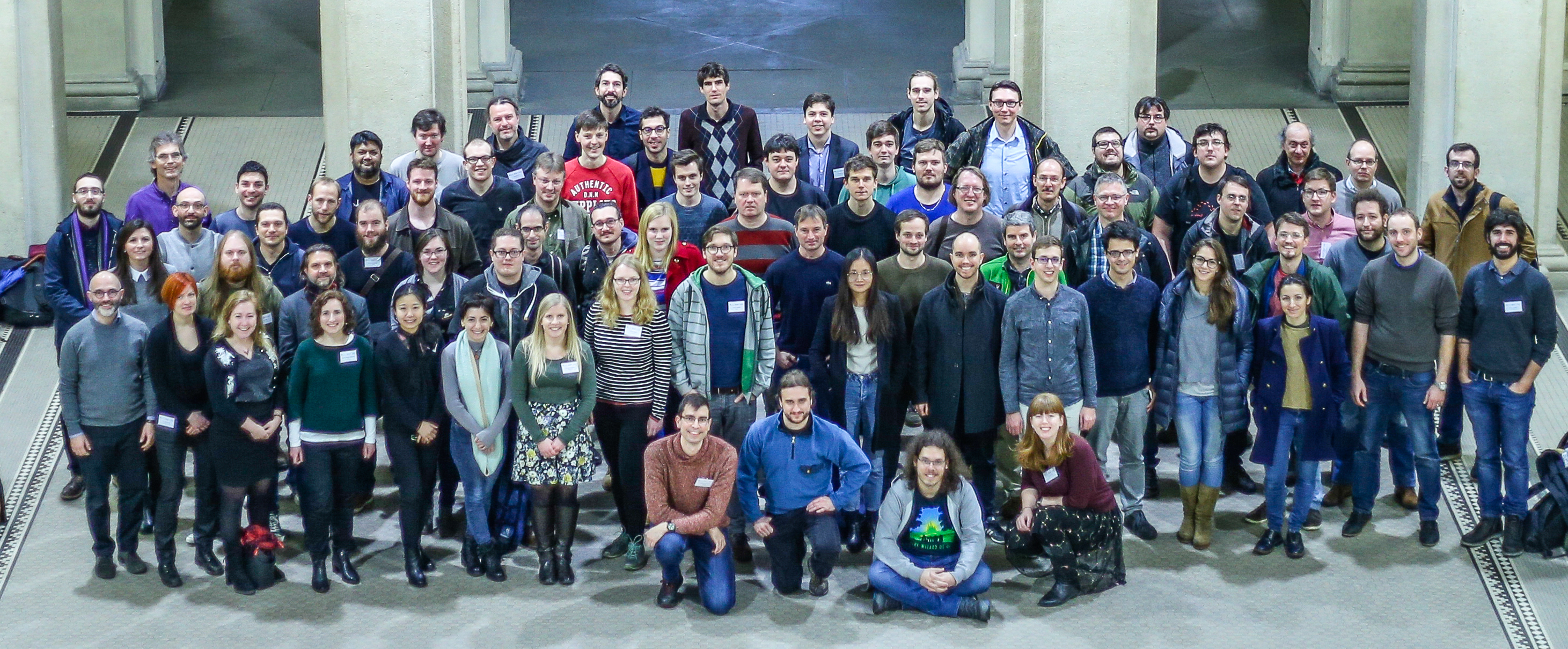
Beam Telescopes and Test Beams Workshop 2018: what's trending?
Romain Muller (CERN), 23/03/2018

Workshop participants in Zurich. Image: Malte Backhaus, ETHZ
The sixth edition of the Beam Telescopes and Test Beams Workshop (BTTB) was held in Zurich, Switzerland, from 16 to 19 January 2018. Close to 90 participants gathered for this three-day workshop which was opened by Professor Rainer Wallny in the main ETH building.
Young researchers (PhDs and postdocs) and experts shared their views on test beams, measurements and detector development through a mix of lectures, plenary talks and hands-on tutorials.
To kick start the event and set the scene, Professor Giovanna Lehmann Miotto gave an overview talk on data acquisition principles and strategies for big experiments such as ATLAS and DUNE.
The speakers shared the latest developments on state-of-the-art infrastructures for beamlines and beam telescopes. It is worth noting that the interest of the community attending the workshop has widened over the editions from mostly focused on pixel detectors to now also calorimetry and timing. In parallel, more and more beam experiments and outreach projects have joined the initiative throughout the years.
The agenda subsequently covered overview lectures on timing measurement which was recognised as one of the cornerstones for future high-energy physics detectors. Challenges with calorimeter prototyping at test beams and the potential of monolithic pixel detectors were also extensively covered in the discussions.
Many results on testing of new prototypes and evaluation of commissioned sensors were presented in the plenary talks, for example micromegas or gas-electron-multiplier-based detectors, silicon pixel or strip and diamond-based sensors, as well as scintillating fibres or highly granular scintillator-based technologies.
The organisers also focused on hands-on activities with six tutorials for participants to test tools and software directly relevant for their respective test beams. This was greatly appreciated across the board.
On every one’s mind was the Long Shutdown (LS) of the Large Hadron Collider (LHC) and its ripple effect on the unavailability for 2019-2020 of the frequently used beamlines of SPS and PS on CERN premises. This will be a problem for beamline users because the number of beamlines available to them is limited across the world. Malte Backhaus as local organiser of this year’s workshop said “During the workshop, one of the hottest topics was the preparation of common tools and infrastructure to prepare the community for the accelerator shutdown at CERN during LS2, which is a serious challenge for the R&D work for the HiLumi-LHC phase after LS3.”
What are the impacts and possible mitigations? The participants anticipate that Fermilab will be under high demand since it will be the only beam line providing 100 GeV/c particles during LS2, and also DESY for all projects which do not require highest energies. A shared beam telescope will be moved from CERN to DESY for the same period and finally a beam line database will be created under AIDA2020 project to provide a central source of information on test beam facilities for stakeholders to build contingency plans.
